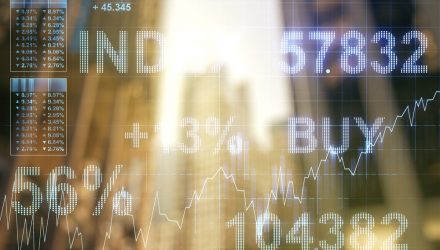Getting multiple asset exposure can help in an uncertain market where diversification can help ease the possibility of a market downturn. Uncorrelated assets can be held via ETFs like the actively-managed Invesco Balanced Multi-Asset Allocation ETF (PSMB).
Active management can help ETFs be even more dynamic. With the ability to get in and out of holdings, active funds like PSMB can benefit when the markets go awry and volatility spikes.
PSMB seeks to provide current income and capital appreciation. The fund seeks to achieve its investment objective by allocating its assets using a balanced investment style that seeks to maximize the benefits of diversification, which focuses on investing portion of fund assets both in underlying ETFs that invest in fixed-income securities (“Fixed Income ETFs”) as well as in underlying ETFs that invest primarily in equity securities (“Equity ETFs”).
Specifically, the fund’s target allocation is to invest approximately 45%-75% of its total assets in Equity ETFs and approximately 25%-55% of its total assets in Fixed Income ETFs. With a mix of bonds and equities, PSMB can get varied exposure to both asset classes when the market warrants a heavier concentration in one over the other.
Is Now the Time to Get Active?
With the markets still caught in the uncertainty of a pandemic, the debate whether to go with an active or passive fund rages on. Amid a severe downturn like the one we saw in March amid the pandemic sell-offs, the case for an actively-managed fund can be made.
“Traditional money management groups have long argued — particularly loudly in the past decade — that they would prove their worth in the next downturn,” a Financial Times article said. “The coronavirus-triggered mayhem of 2020 has been a perfect opportunity to demonstrate the merits of human “active” management, while staunching the outflows or even beginning to reverse them.”
“It’s markets like this . . . where active managers get to show outperformance,” Jenny Johnson, Chief Executive of Franklin Templeton, told analysts in April. “And as you have outperformance, the flows will follow.”
That said, the resurgence of active funds can be seen in a number of ETF providers giving the people what they want: more actively-managed products. An ongoing topic of discussion in the passive versus active debate is whether the latter’s performance warrants the cost–some analysts think it does.
“The shortcomings of mechanised trading, better known as passive trading, will come into sharper focus,” Peter Harrison, Chief Executive of Schroders, wrote in the FT in March. “The answers will not be conjured up by arms-length algorithmic investment management.”
For more news and information, visit the Innovative ETFs Channel.









